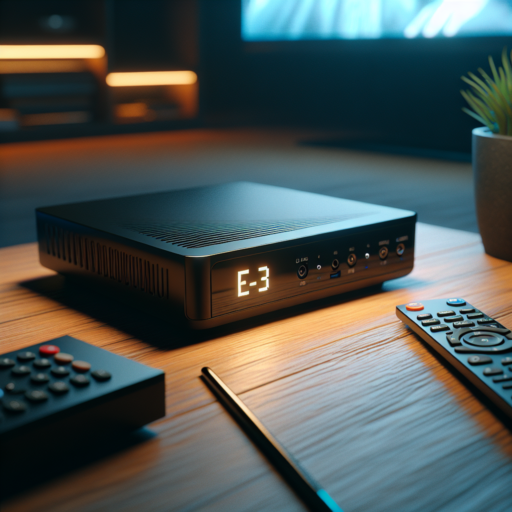What Causes a Pink Line on Your Monitor?
Experiencing a pink line on your monitor can be a concerning and frustrating issue, particularly if you’re unsure of its origin. This anomaly is not only distracting but could also indicate an underlying problem with your display. There are several reasons why you might be seeing this unwanted feature on your screen.
Hardware Malfunction
One of the most common causes of a pink line appearing on your monitor is a hardware malfunction. This could stem from a variety of issues such as loose cable connections or damaged wires. It’s also possible that the monitor itself has sustained damage, particularly to the LCD panel or its connecting ribbon. Over time, wear and tear or accidental physical damage can result in these components malfunctioning, leading to color distortions including pink lines.
Graphic Card Issues
Another potential culprit could be the graphics card. If the card is failing or not properly seated in its slot, it might not communicate effectively with the monitor, leading to display issues like pink lines. Overheating can also cause similar problems, especially if the graphics card’s cooling system is inadequate or clogged with dust, reducing its efficiency.
Software conflicts or outdated drivers can occasionally cause pink lines to appear on your monitor as well. Ensuring that your monitor’s drivers and the graphics card’s drivers are up to date is a crucial step in troubleshooting this issue. Sometimes, a quick update can resolve the problem with minimal effort.
How to Fix a Pink Line on Monitor – Step by Step Guide
Experiencing a pink line on your monitor can be both annoying and alarming, indicating potential hardware or software issues. However, before you consider replacing your monitor, there are several steps you can undertake to possibly resolve this issue. The following guide provides a detailed approach to troubleshoot and fix the pink line problem on your monitor.
Step 1: Check Monitor Connections
Start with the basics by checking all the monitor connections. A loose or damaged cable can often cause display issues, including the appearance of pink lines. Ensure that your VGA, HDMI, DVI, or DisplayPort cable is securely connected and not damaged. If you find any visible signs of wear and tear, consider replacing the cable and check if the issue persists.
Step 2: Update or Reinstall Graphics Drivers
Outdated or corrupt graphics drivers can lead to a variety of display problems, including pink lines. Therefore, updating or reinstalling your graphics drivers could resolve this issue. For most users, this can be done through the Device Manager in Windows. Simply right-click on your graphics card listed under Display Adapters and select Update driver. Alternatively, you can visit the manufacturer’s website to download and install the latest drivers.
Is a Pink Line on Your Monitor a Sign of Serious Damage?
Experiencing a pink line on your monitor can be a worrying sight, prompting questions about the severity of the issue. This visual anomaly can appear suddenly, affecting the display quality and overall user experience. While not always a harbinger of catastrophic damage, it is essential to understand the factors that could lead this pink line to manifest on your screen.
Potential Causes of a Pink Line on Monitors
Several factors might be responsible for the appearance of a pink line on your monitor. Loose or damaged cables can often be the culprits, as they fail to transmit data correctly between the computer and the monitor. Another common cause is graphics card issues, where the card is either malfunctioning or not properly seated in its slot. Monitor damage, including internal conflicts or screen damage, can also manifest as a pink line across the display.
Is It an Indication of Serious Damage?
While the presence of a pink line on your monitor is indeed a concern, it doesn’t always indicate serious or irreversible damage. In many cases, addressing the root cause, such as securing loose connections or updating graphics drivers, can resolve the issue without the need for expensive repairs. However, if the problem persists despite these troubleshooting efforts, it may suggest a more significant problem requiring professional attention. Identifying the exact cause is crucial for determining the severity of the damage and the appropriate course of action.
DIY Solutions for a Pink Line on Your Monitor
Encountering a pink line on your monitor can be both distracting and disconcerting, suggesting potential hardware issues. However, before you consider costly repairs or replacements, several do-it-yourself (DIY) techniques can be applied to potentially resolve the issue. These solutions range from simple software adjustments to more hands-on physical interventions, depending on the root cause of the problem.
Check Your Monitor Cables and Connections
One of the first steps in troubleshooting a pink line on your monitor is to examine your monitor cables and connections. Loose or damaged cables can often cause display anomalies, including pink lines. Disconnect and reconnect all cables, ensuring they’re firmly seated. Additionally, try replacing the cable if possible, as this could instantly resolve the issue without further intervention.
Update or Reinstall Your Graphics Driver
A faulty or outdated graphics driver could also be the culprit behind the pink line on your display. Navigate to the Device Manager on your computer, locate the graphics card driver, and check for updates. If updates are available, install them and restart your computer. Alternatively, uninstalling the driver and then downloading and installing the latest version from the manufacturer’s website can also rectify the issue, essentially refreshing the connection between your hardware and software systems.
Adjust Your Monitor Settings
If the hardware solutions prove ineffective, adjusting your monitor settings could offer a solution. Access the monitor’s on-screen display (OSD) menu to adjust the color balance, contrast, and brightness. Some monitors also have a ‘factory reset’ option that might eliminate the pink line by restoring original settings. It’s worth experimenting with these adjustments to see if the pink line diminishes or disappears entirely.
When to Seek Professional Help for a Pink Line on Monitor
A pink line on your monitor can be more than just an annoyance; it can signify a deeper problem with your computer’s hardware or software. Understanding when to transition from troubleshooting at home to seeking professional assistance is crucial. This is especially true if the issue persists despite your best DIY efforts.
Signs It’s Time for Professional Help
- Persistent Lines: If the pink line remains on the screen after restarting your computer and checking the monitor’s connection, it’s likely a sign of a deeper issue.
- Spreading: A single line that starts to multiply or spread across the screen indicates a failing display panel or video card, which are complex issues best handled by professionals.
- Appearance in BIOS: Seeing the line even when you’re in the computer’s BIOS setup suggests a hardware issue rather than a software problem, necessitating expert repair.
Attempting DIY fixes might provide a temporary solution, but without addressing the root cause, the problem is likely to recur. In cases where the pink line demonstrates any of these persistent or spreading behaviors, or is visible in BIOS, reaching out to a professional ensures your monitor or computer is accurately diagnosed and repaired, potentially saving you time and further damage in the long run.
Understanding LCD Monitor Pink Line Issues
When it comes to LCD monitor issues, few are as perplexing and visually disruptive as the appearance of pink lines across the screen. This phenomenon can occur out of the blue, turning an otherwise clear and vibrant display into a frustrating display anomaly. But what causes these pink lines, and more importantly, how can they be addressed? Understanding the root causes of pink line issues is the first step towards diagnosing and eventually fixing this common problem faced by LCD monitor users.
The emergence of pink lines on an LCD monitor can be attributed to a variety of factors. One major culprit is a loose or damaged cable connection. The connection between a computer and its monitor involves precise data transmission, and if this process is hindered in any way—say by a damaged VGA, DVI, or HDMI cable—visual anomalies like pink lines can occur. Additionally, problems within the monitor itself, such as malfunctioning internal connections or issues with the monitor’s panel, can also lead to the manifestation of pink lines.
Environmental factors play a not insignificant role in this issue. Exposure to high temperatures or humidity can affect a monitor’s performance, potentially leading to the appearance of pink lines. Moreover, prolonged use without proper rest intervals can overheat the internal components of the monitor, exacerbating the problem. However, it’s not all doom and gloom—many of these causes can be rectified with careful troubleshooting and maintenance.
Prevention Tips: How to Avoid Getting a Pink Line on Your Monitor
Maintaining the pristine condition of your monitor is essential for an optimal viewing experience. A common issue that many users encounter is the appearance of a pink line on the screen, which can be distracting and indicate underlying problems. Fortunately, there are several preventive measures you can take to avoid this issue.
Regular Monitor Maintenance
Keeping your monitor clean and dust-free is a fundamental step in preventing screen abnormalities, including pink lines. Use a soft, dry cloth to gently wipe the screen’s surface. Avoid using harsh cleaning agents or water, as they can seep into the edges and cause damage to the display components. Additionally, ensure proper ventilation around your monitor to prevent overheating, which can lead to screen damage.
Proper Connection and Handling
Loose or improper connections can lead to display issues such as pink lines. Ensure that all cables are securely connected and that the ports are free from dust or corrosion. If you’re using an adapter or a converter, check its compatibility and condition, as a faulty adapter can also cause display problems. When moving or adjusting your monitor, handle it with care to avoid pressure on the screen that could lead to pixel damage.
The Impact of a Pink Line on Gaming and Graphic Design
In the dynamic realms of gaming and graphic design, the appearance of a pink line is not merely an aesthetic hiccup; it’s a phenomenon that speaks volumes about the health and performance of digital display technology. This seemingly insignificant occurrence can drastically affect the visual output, impacting user experience and content integrity. For game developers and graphic designers, understanding the implications of this issue is critical in maintaining the high-quality visuals that audiences demand.
Significance in Gaming
For gamers, the immersive experience is paramount, and visual glitches like a pink line can break the spell of gaming realism. In fast-paced environments, where split-second reactions are necessary, these distractions can lead to poor performance or even game defeat. Moreover, the presence of a pink line could signal deeper hardware issues, potentially costing gamers not just in-game progress but also significant financial investment in repairs or replacements.
Implications for Graphic Design
In graphic design, precision and color accuracy are the cornerstones of professionalism and creativity. A pink line across a designer’s monitor is not only bothersome but can distort color representation, leading to inaccuracies in digital artworks. These inaccuracies can affect the final product, possibly misleading clients or misrepresenting a brand. Consequently, mitigating this issue is crucial for maintaining credibility and client satisfaction in the highly competitive graphic design industry.
Comparing Costs: Repair vs. Replacement for Monitors with a Pink Line
When your monitor starts displaying a persistent pink line, it’s a signal that something is wrong. Before making a choice between repair and replacement, it’s crucial to compare the costs and consider which option offers the best value in the long run. The decision might not be as straightforward as it seems and involves assessing several factors such as the age of the monitor, warranty status, and the severity of the issue.
Understanding the Causes Behind the Pink Line
The appearance of a pink line on your monitor can be attributed to a variety of causes, from simple loose connections to more severe issues like panel damage. Identifying the root cause is essential as it significantly influences the cost-effectiveness of repair options. For minor issues, a simple fix could extend your monitor’s lifespan significantly, tipping the scales in favor of repairs. However, if the problem stems from deep-seated hardware failures, the higher repair costs might make replacement a more viable option.
Cost Analysis: Repair Expenses
Repairing a monitor with a pink line might seem like an economical choice at first glance, especially if the monitor is relatively new or high-end. Professional diagnosis and repair can range widely in cost, depending on the complexity of the issue and the necessary repairs. Sometimes, if the problem is covered under warranty, you might only be responsible for shipping costs. However, it’s important to weigh the repair costs against the price of a new monitor, considering the potential for future issues and the benefits of newer technology.
No se han encontrado productos.
Testimonials: How Users Fixed Their Monitor’s Pink Line Problem
In the journey towards a flawless screen experience, many users have encountered an irritating interruption: a persistent pink line on their monitor. This common issue, while not catastrophic, can dilute the pleasure of using your computer for work, gaming, or streaming. However, through a blend of DIY tricks and targeted solutions, several individuals have navigated their way through this annoyance. Below are real-world testimonials that shine a light on how they resolved the pink line dilemma on their monitors.
User Solutions That Made a Difference
- Cable Check: One of the first steps shared by users was checking and replacing their video cables. A surprising number found that a faulty cable was the culprit behind the pink line. Switching to a new HDMI or DisplayPort cable not only fixed their issue but also significantly improved their display quality.
- Graphics Card Connection: Another recurring solution involved reseating the graphics card. Users who took the plunge to open their PCs and ensure that the graphics card was properly connected often saw the pink line disappear. This step required a bit of technical know-how but proved to be a game-changer for many.
While not every solution worked for everyone, the shared experiences of troubleshooting the pink line issue on monitors reveal a community-driven path to resolving technical glitches. From checking cables to adjusting graphic card connections, these user testimonials provide valuable insights into tackling a common but frustrating problem.




